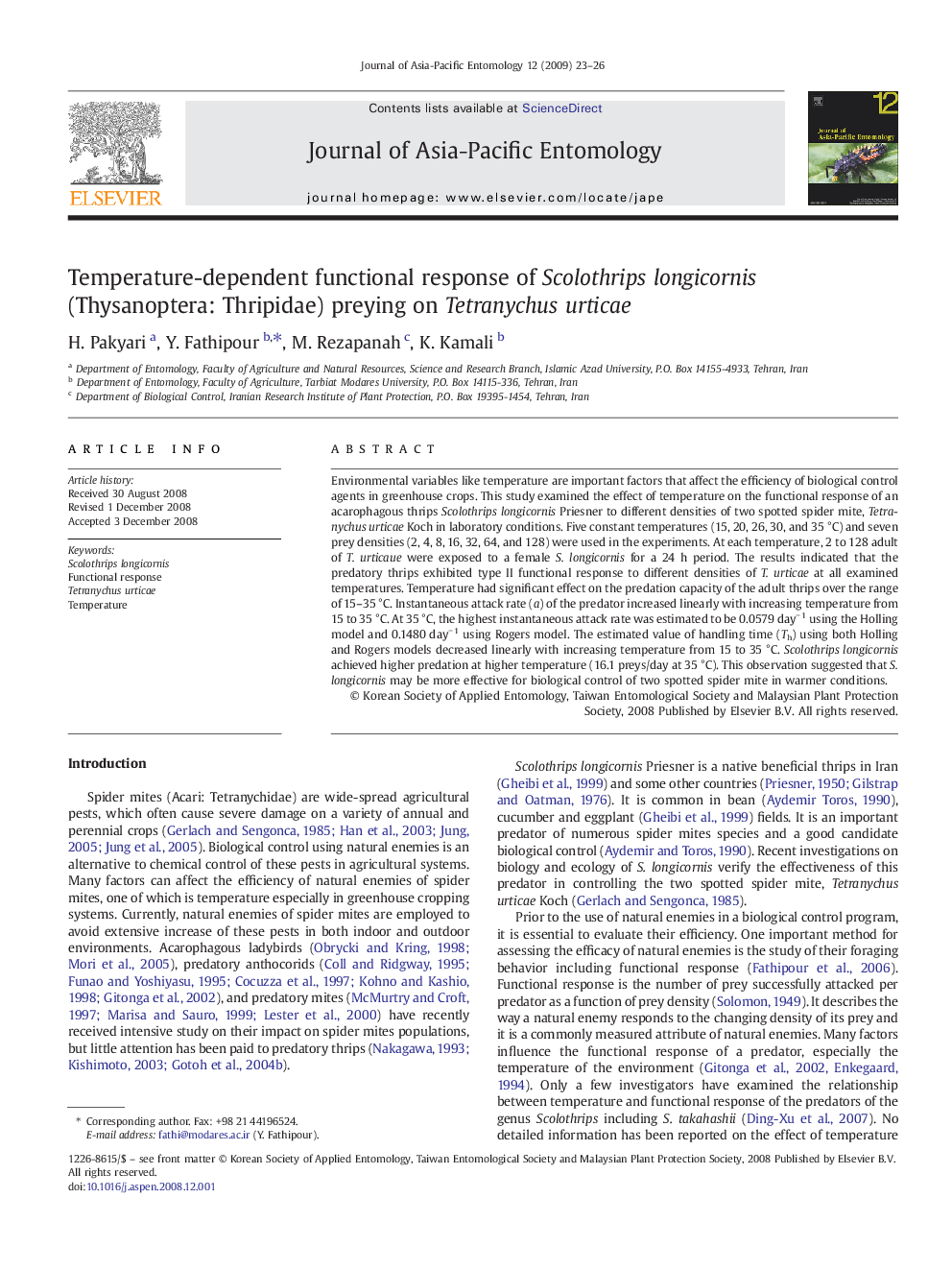| Article ID | Journal | Published Year | Pages | File Type |
|---|---|---|---|---|
| 4524985 | Journal of Asia-Pacific Entomology | 2009 | 4 Pages |
Environmental variables like temperature are important factors that affect the efficiency of biological control agents in greenhouse crops. This study examined the effect of temperature on the functional response of an acarophagous thrips Scolothrips longicornis Priesner to different densities of two spotted spider mite, Tetranychus urticae Koch in laboratory conditions. Five constant temperatures (15, 20, 26, 30, and 35 °C) and seven prey densities (2, 4, 8, 16, 32, 64, and 128) were used in the experiments. At each temperature, 2 to 128 adult of T. urticaue were exposed to a female S. longicornis for a 24 h period. The results indicated that the predatory thrips exhibited type II functional response to different densities of T. urticae at all examined temperatures. Temperature had significant effect on the predation capacity of the adult thrips over the range of 15–35 °C. Instantaneous attack rate (a) of the predator increased linearly with increasing temperature from 15 to 35 °C. At 35 °C, the highest instantaneous attack rate was estimated to be 0.0579 day− 1 using the Holling model and 0.1480 day− 1 using Rogers model. The estimated value of handling time (Th) using both Holling and Rogers models decreased linearly with increasing temperature from 15 to 35 °C. Scolothrips longicornis achieved higher predation at higher temperature (16.1 preys/day at 35 °C). This observation suggested that S. longicornis may be more effective for biological control of two spotted spider mite in warmer conditions.
